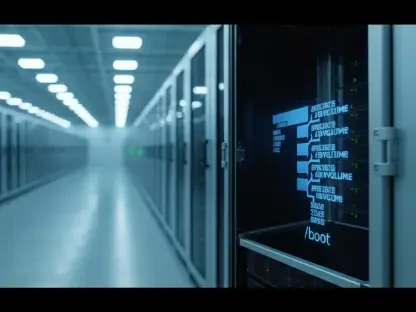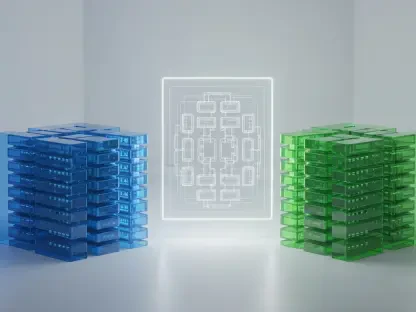In the ever-evolving world of technology, security has become a crucial aspect of mobile app development, driven by the continuous rise of data breaches and cyber threats. Developers and organizations are constantly seeking reliable methods to enhance the security of their mobile applications. Docker, a platform designed to develop, ship, and run applications in containers, has emerged as a strong candidate due to its unique advantages that improve security across various stages of the development lifecycle. This article delves into five significant ways Docker can enhance security in mobile app development, offering practical insights and real-world examples.
1. Isolation of Dependencies
Docker containers provide a lightweight, isolated environment for running applications, which means that each application and its dependencies run in their own container. This isolation significantly reduces the risk of conflicts and vulnerabilities stemming from shared libraries. Such separation is particularly vital in mobile app development, where different applications might require different versions of the same library.
In a traditional development environment, applications often share the same operating system and libraries, leading to dependency conflicts and heightened security risks. For instance, if one application necessitates a specific version of a library that conflicts with another, it can create vulnerabilities and unpredictable behavior. Docker addresses this issue by encapsulating the application and its dependencies within a container, ensuring that they operate in their own controlled environment without interference, thus enhancing security and stability.
A prominent example of the isolation benefits provided by Docker is Netflix, which utilizes Docker to manage its microservices architecture. By isolating different services, Netflix mitigates the risk of one service affecting another, thereby ensuring a secure and reliable streaming experience for its users. In practical terms, developers can isolate their mobile app’s environment using a Dockerfile, establishing an isolated setup that prevents interference from other applications or dependencies.
2. Controlled and Consistent Environments
Docker enables developers to create controlled and consistent environments across various stages of development, from initial coding to final deployment. This consistency is crucial for identifying security vulnerabilities early on in the development cycle and ensuring smooth transitions between different stages.
Inconsistent environments can lead to discrepancies in application behavior across development, testing, and production environments. These inconsistencies might conceal vulnerabilities that manifest under specific conditions, escaping detection during testing. Docker guarantees that every environment—be it development, testing, or production—is identical, making it simpler to spot and rectify security issues.
For instance, Spotify employs Docker to manage its development environments, ensuring consistency across all stages. By maintaining identical environments, Spotify minimizes the risk of security vulnerabilities emerging from discrepancies between development and production, providing users with a seamless and secure experience.
Developers can utilize Docker Compose to define multiple services with particular versions of dependencies, ensuring that everyone on the team operates within the same environment. This predefined configuration guarantees that the application maintains consistent settings across different stages, reducing the probability of introducing security issues due to environment discrepancies.
3. Simplified Dependency Management
Docker simplifies dependency management by encapsulating all application dependencies within the container. This encapsulation reduces the risk of vulnerabilities from outdated libraries or components, ensuring that applications run with the specified versions of libraries and tools under known states.
Managing dependencies in traditional applications can be quite challenging, particularly when it involves keeping libraries up to date and ensuring compatibility among different components. Docker allows developers to specify exact versions of libraries and tools within their Dockerfile, ensuring that the application operates in a controlled state and minimizing exposure to known vulnerabilities.
A practical example is LinkedIn, which leverages Docker to manage dependencies across its various services. By ensuring that each service runs with the correct versions of libraries, LinkedIn can minimize vulnerabilities and maintain a secure platform for its users. In practice, developers can utilize a Dockerfile to specify the exact versions of dependencies, thus ensuring that the application consistently runs with the specified dependencies and reducing the attack surface from vulnerabilities in third-party libraries.
4. Secure Image Storage and Distribution
Docker provides the ability to store and distribute images securely, utilizing private container registries to ensure that only authorized users can access and deploy images. This capability is particularly important in organizations where images may contain sensitive information such as API keys, secrets, and proprietary code.
Utilizing a public registry to store sensitive images poses the risk of exposing critical information to unauthorized access. Docker mitigates this risk by enabling the use of private registries where access can be strictly controlled. Only authenticated users can pull images, significantly reducing the likelihood of unauthorized access and potential data leaks.
An example of secure image storage and distribution in action is GitHub, which employs Docker’s private registries to manage container images securely. By restricting access to images, GitHub ensures that only authorized developers can deploy applications, thereby minimizing the risk of data leaks and unauthorized access. Developers can implement a private registry for Docker images, ensuring that only trusted images are deployed to production environments, providing an additional layer of security for sensitive application components.
5. Enhanced Vulnerability Scanning
Docker integrates with various security tools that enable the scanning of container images for known vulnerabilities. This proactive approach allows developers to identify and mitigate security risks before deployment, ensuring that only secure images make their way into production environments.
With the rapid pace of software development, vulnerabilities in libraries and dependencies can emerge quickly. Docker supports the use of automated vulnerability-scanning tools, which inspect images for known vulnerabilities. This proactive security measure allows teams to address vulnerabilities early in the development lifecycle, significantly enhancing the security posture of mobile applications.
A practical example is Alibaba Cloud, which incorporates automated vulnerability scanning in its Docker container service. By continuously scanning images for vulnerabilities, Alibaba Cloud can address security issues before deployment, ensuring a secure environment for its users. Developers can utilize tools like Trivy to scan Docker images for vulnerabilities, proactively identifying and addressing security risks before deploying to production.
Steps to Follow
Incorporating Docker into mobile app development can greatly enhance security, but it requires a structured approach. Implementing continuous integration and continuous deployment (CI/CD) pipelines with Docker enables automated security checks throughout the development lifecycle. By incorporating automated security verifications into CI/CD pipelines, developers can ensure that security measures are consistently applied at every stage, from code commits to deployment.
Regularly updating Docker images to include the newest security patches is another vital step. As security vulnerabilities are discovered and addressed, it’s essential to keep Docker images up to date with these patches to prevent exploitation. Container management practices should include frequent updates and reviews to ensure that the latest security measures are implemented.
Training development teams on recommended practices for secure containerization is also crucial. Educating developers on best practices for creating, managing, and deploying Docker containers helps minimize security risks and ensures that everyone involved in the development process adheres to stringent security standards.
Conclusion
In the constantly changing realm of technology, the security of mobile apps has become paramount, spurred by the ongoing surge in data breaches and cyber threats. Developers and businesses are in a continual quest to discover effective ways to bolster the security of their mobile applications. Docker, a platform created to develop, ship, and run apps within containers, has gained significant attention for its distinct advantages in enhancing security at various stages of the development lifecycle. This piece explores five key ways Docker can improve security in mobile app development, providing practical advice and real-life examples. Docker’s ability to encapsulate apps in containers ensures consistency and isolation, thus reducing vulnerabilities and enhancing overall security. Its features support reliable, tamper-proof environments, which is crucial for protecting sensitive data and maintaining the integrity of mobile applications. By leveraging Docker, developers can streamline their security protocols, resulting in more robust and secure mobile apps.









